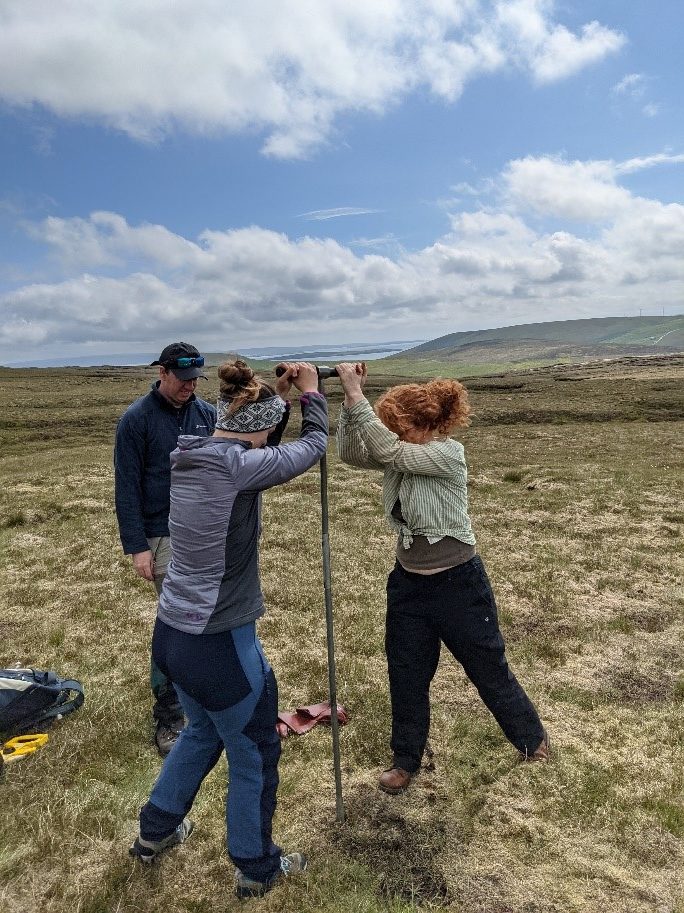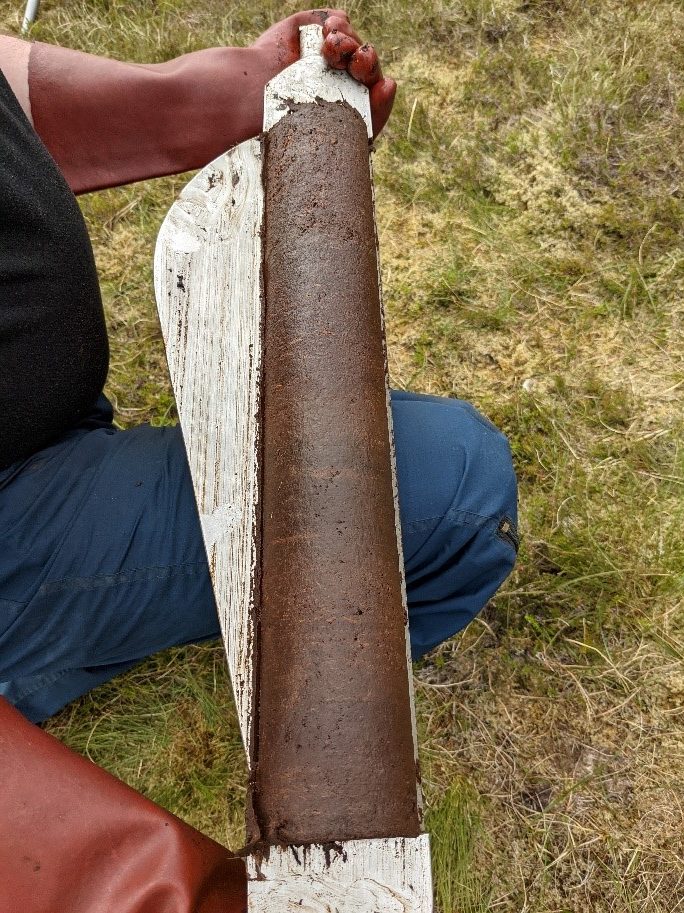With Covid-19 restrictions easing and vaccination roll-out underway, it has finally been possible to begin fieldwork! My project uses pollen from peat cores to reconstruct the landscape of Neolithic Shetland; collection of new cores for analysis had, until recently, been delayed, but in the first week of July, armed with a Russian peat corer, a lengthy risk-assessment and daily Covid tests, myself, project supervisors Dr. Will Megarry (Queen’s University Belfast) and Dr. Ed Schofield (University of Aberdeen), and fellow Quadrat palaeoecologist Sarah Ferrandin headed North.

The landscape of Shetland is today very open and is dominated by rough grazing and blanket peat, with (mostly deliberately planted) trees growing in some sheltered valleys, but this was not always the case. Previous pollen studies have shown a high percentage of tree pollen in some areas, but there is considerable variability across the island group, and some regions have received little attention from palaeoecologists so the character of the landscapes that Neolithic people inhabited remains conjectural.
Using Scottish soil maps and publicly-available peat depth survey data collected as part of the Peatland Action programme and downloaded from the Scottish Natural Heritage website[1], we identified promising peatlands around the study area, close to the Neolithic felsite quarries at Northmavine, north-west Mainland, where during the Neolithic people obtained the hard blue stone that they used out of preference for their polished axes and flat oval knives. The granite uplands around the quarry sites have thin peaty or alpine soils, so infilled basins and areas of thick blanket peat were sought out as close to known Neolithic archaeology as possible, in the hope that any human-induced landscape changes would be recorded in the pollen stored in the peat.

To find the peat with the best chance of capturing the Neolithic we needed to locate the point where it was deepest. Peat depth measurements were made using at 50m intervals in transects across promising areas using the gouge auger, and the depth and positions recorded using the ArcGIS mobile survey app Survey123 (figures 3, 4). At the deepest locations the peat was sampled using a Russian peat corer (figure 5) and was safely packaged in lengths of plastic guttering for its trip back to Queen’s. The priority now is to date the start of peat formation, which will be done using AMS radiocarbon dating at the Chrono Centre, conveniently situated in the basement of QUB’s Archaeology and Palaeoecology building. Only then will we know if we have been successful in tracking down Neolithic pollen!


The landscape of Shetland is stark and beautiful, though the weather was extremely kind to us during our short trip. Having previously only seen maps and a few photos, I was struck by how, although the landscape appears bleak, the hills and voes create areas sheltered from the winds, how different the uplands of Northmavine are to the rest of Mainland, and how widespread the peat cover is. Traces of Neolithic archaeology, some unrecorded, are everywhere, and many more ancient stories and landscapes must be preserved both beneath, and within, the peat.

[1] http://gateway.snh.gov.uk/natural-spaces/dataset.jsp?dsid=PEATACT-DEPTH
Photographs: HM (Hazel Mosley), WM (Will Megarry)





















































